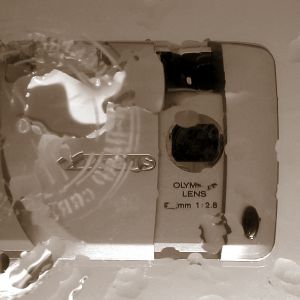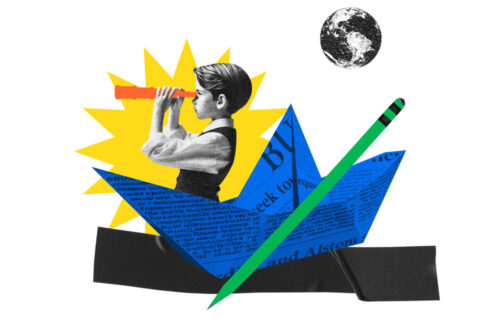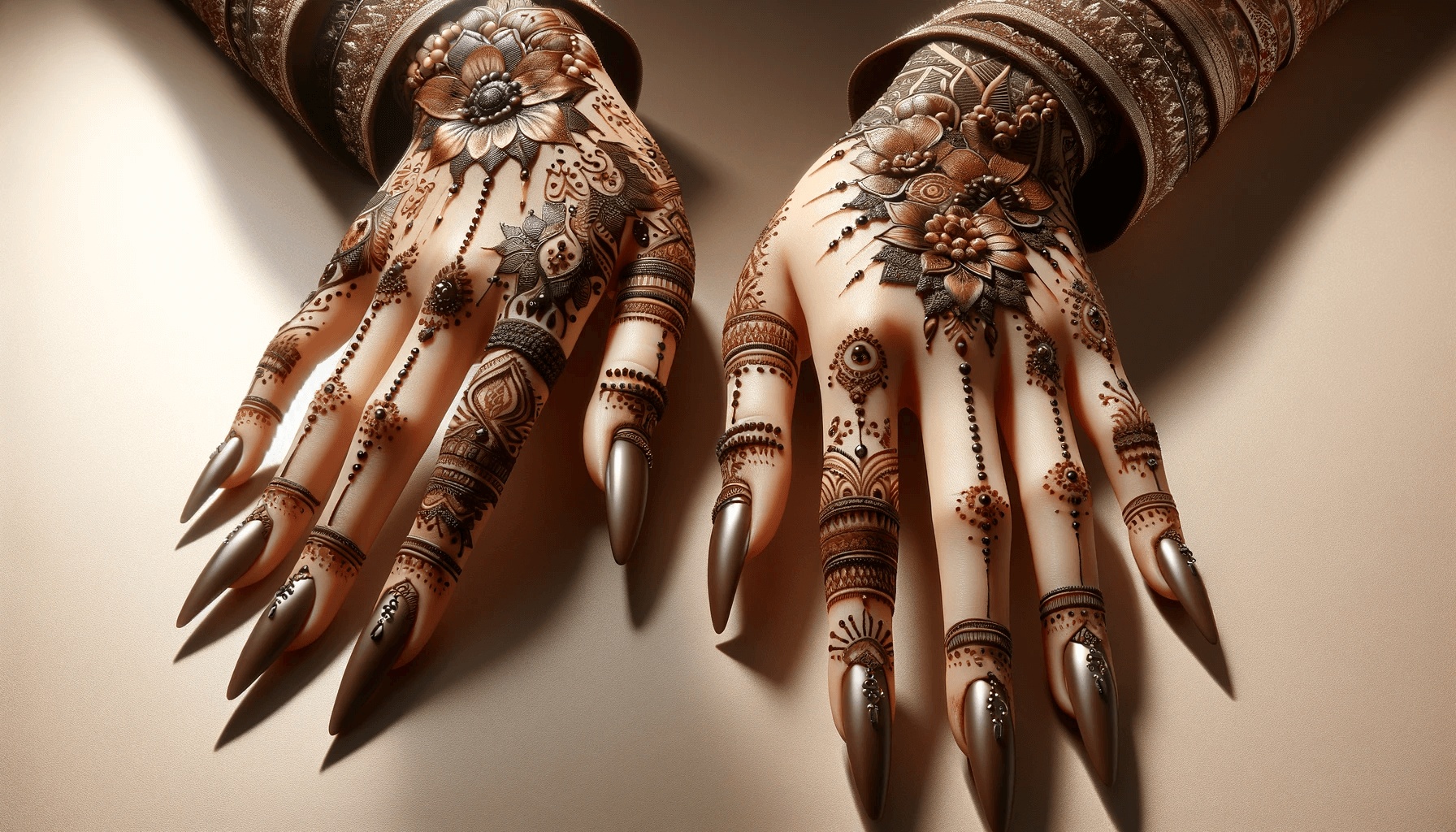One thing I discovered during my experience with digital photography, is that digital photography is very well suited for the portrait photographer. So why are we the last to jump on the band wagon? Many commercial shooters have known about and mastered the use of digital in their business’s for far longer than the portrait photographer.
My guess is that we’re afraid. Afraid of the learning curve and afraid that the quality just isn’t there unless we spend an ungodly amount of our hard earned cash on some scary looking gigantic array of confusing and awkward, let alone “how am I going to learn how to use this stuff” equipment.
Truth is, you can easily get away with as little as a 3.5 megapixel camera. I know, I used my Canon D30 for the first eight months of my digital journey. That camera created more memories, more sales and more wall portraits that I ever thought imaginable.
Whoa, wait a minute you say, wall hangings? Can’t be!! When I put on my seminars I routinely display many large wall samples for all to see, with some of the older samples I created with the 3.5 megapixel camera; and the reaction I get is usually disbelief. The quality is there. I’ve proven it over and over and I know anyone can replicate the same results. Yes, even with a 3.5 megapixel camera.
You’ve just got be careful, that’s all. We have a collection of images at our studio, even large wall hangings captured with our dinky little D30, and they are “jaw-dropping” stunning. I know other photographers who have had amazing results as well. I know that it works and file size is secondary.
There are many reasons, but I’ll work with the main list. Here they are:
Quality.
The quality of images captured with a high quality lens, properly exposed and well posed is more than enough, even if you shoot JPEGS. Yes, JPEGS. Over 90% of the more than 30-40,000 exposures I put through my camera every year is shot in JPEG mode. Why? Why would anyone in their right mind shoot in such a “low quality” mode? The answer is simple: It works.

I like to compare JPEG’s to shooting with portrait film. It is slightly softer (although not even noticeable to the human eye) and muted, ideal for skin tones, right? Besides, we slap on “softar” filters in front of these outrageously expensive lenses and degrade the image even more. Don’t bother. Shoot with a good lens, in JPEG mode, expose properly, pose and create as usual, and it will all come together. Add any effects later. Look at what else portrait photographers have been doing to their finished images besides purposely degrading the image with “softars”. We retouch the surface of the print, sometimes extensively. We canvas mount. Add texture sprays.Oils. Linen laminates…on and on. My point is simple. Portrait photographers do not need to create the very sharpest, highest resolution images available. If they have in the past, they’ve always degraded the image through these other means. It’s kind of ironic don’t you think? You can still shoot in RAW mode if you wish, but it isn’t really needed.
If we needed the absolute highest quality image at capture we would have all been shooting with Kodachrome 64 or Velvia on a 4?x5 camera. But we don’t. JPEGs work. I have many 30? prints, and even a 70? print, that was captured in JPEG. And they look amazing. Your can too.
Control.
People want their photos fast. We live in a drive-through world and minutes count. In our studio we create a slide presentation for our sessions and we show them to the clients within 20 minutes of every shoot. Clients love it. They get to see the results instantly. If you fight this you’re fighting basic human nature. We want, want, want, and want to see it sooner than later. Sales go up, the client is already in the studio ready to see the images, and ready to spend. Their is ample evidence that when you show the images sooner, and you create large projected images, which is a cinch with digital, sales go up. Digital gives the portrait photographer more control over the sales process, and ultimately it means more profits. For instance, this photo was taken by digital camera :
| » Camera: | Canon DIGITAL IXUS 400 |
| » Exp. time: | 1/400 (0.003 secs) |
| » Aperture: | f/7.1 |
| » Focal length: | 7 mm |

Retouching.
Let’s face it, people want to look good. What used to take hours and whole lot of aggravation with spray booths, smelly and dangerous lacquers, is now possible with absolute ease. Even when I decided to farm out all my retouching because I had had enough, it still took weeks or months, and huge retouching bills.
Not to mention the loss of control I had over the retouching aspects. It was up to the subjective interpretation of the retouching artist to enhance the images the way I wanted them retouched. Now, with a few basic skills, and all those years of retouching experience all transferred over to the new darkroom, my computer, I can easily retouch to any degree I like. In mere minutes. With absolute astounding results. This ultimately translates to satisfying a basic need that needs to satisfied in our clients, their vanity. They want to look good, and they want it fast.

Innovation. I could go on for days when it comes to what new products, ideas, services, sales processes, packages, etc, etc…I have been able to create because of digital photography. Suffice it to say for now that I am excited and alive again with passion about my photography and about the possibilities. When you apply the power of digital, and get a handle on it in your workflow, you can create new and exciting products like never before.
I’ve seen it and experience it every week in our busy little small-city studio. The proof ultimately boils down to net profits, doesn’t it?
After all, we are in business first, and creative artists second, right? Right? Are you with me on this one? We are in business to make money and survive. We need new and exciting angles, ways to stay afloat, so we can pay our bills, keep the bankers happy and provide for our families. No one can predict will total accuracy how digital photography will ultimately evolve, but my betting dollar is with it all the way. I’m not taking any chances.
Anyone remember when colour film and paper was introduced as a mainstream commodity? I don’t, I was just a wee lad, but I heard stories about the many studio owners closing their doors and packing it in because they didn’t want to keep up with the demand and latest craze that colour film and colour paper had created. Dinosaurs. Every last one of them. Their loss, all because of a thick head and mis-guided egos. Don’t be a dinosaur.
My biggest discovery: Who the true expert is!
Ultimately the true expert in our business is not ourselves, or our peers. The real expert is the client. They open up their hearts and wallets and fork over hard earned cash for the memories we create for them. Do they care if it is shot on a JPEG? In RAW mode? Do they care if we use the biggest, best, strongest, fastest computers and software? Of course not. When you get into your clients head and listen to the conversation that goes on these things are totally irrelevant.
Far more important to her, and to us, is the fundamentals of good photography. In a whirlwind of technological advances nothing seems to ever stay the same. Truth is, the fundamentals of good photography will never change. That’s where is all starts. Master that and you have 99% of your digital photography challenges mastered.




I’m trying not to be a dinosaur… when manstream photography began to go digital I admit I resisted big time. A self-proclaimed Nikon 35mm junkie no way was I going to give up the freedom and creativity afforded by my SLR’s to jump on the digital bandwgon. However, it is time. Your article really helped me make the connection and off I go to select my new mode of opporendum. I’m thinking the D90 or D300 depending on how much debt I want to incur… Anyhow, thanks for the insight and encouragement. Jpeg here I come.
Julie
Hello, I can’t understand how to add your blog ( pswish.com ) in my rss reader
yo, pswish.com great name for site)))
Please Help,
I am considering reviving my photo business and currently own the following:
-2 35mm Canon EOS (film) SLR’s.
– 1 Novatron 1000 lighting kit.(Purchased in 1990).
I would like to “phase in” my portrait-studio business into the digital realm. Can I use a new Canon digital slr with my old Novatron?
Thank you,
Stephanie
Interessante Informationen.
Why are there so many thick books published about digital cameras to tell you how to set the dozens of settings on them to take a picture so that it looks like as good as film? For me it’s not an advantage. Oh right, “computers make life easier”- but computers have made the back end(pouring over hundreds of shots to narrow which ones will be photoshopped)take much longer time, creating late nights because the customer has used a digicam at their kids baptism and “knows how quick and easy it is”. Sorry, still don’t get the advantage.